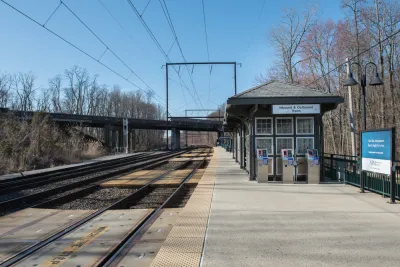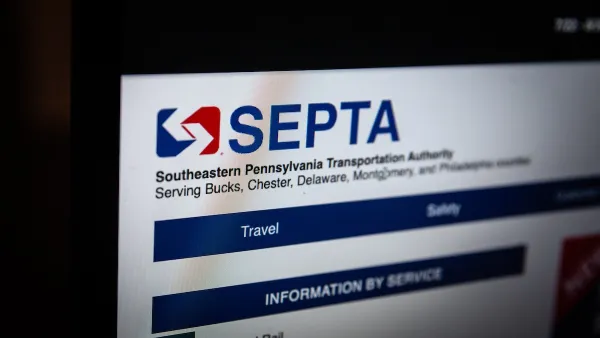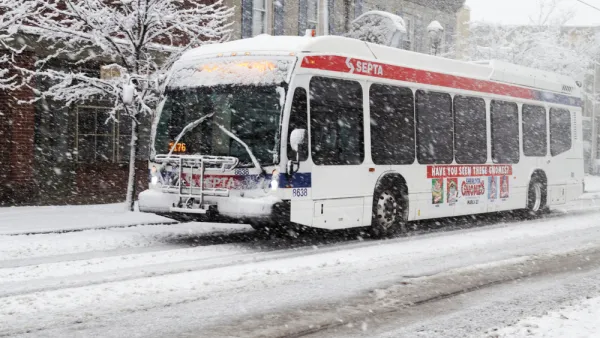Ridership on the nation's commuter rail services has plummeted more than other forms of transit during the pandemic. Serving a more affluent, professional ridership, commuter rail is looking more likely to face long-term cuts after the pandemic.

Patricia Madej writes about the uncertain future of commuter rail in light of the changing patterns of working and living during the pandemic, and the potential that some of these changes could be long lasting.
Madej summarizes the daunting challenges facing the Southeastern Pennsylvania Transportation Authority (SEPTA) in particular:
With ridership down about 85% from pre-pandemic levels, SEPTA Regional Rail is essentially running empty trains, and it’s clear that many of its suburban riders won’t return to five-day-a-week schedules given the appeal of white-collar telework. To sustain and grow Regional Rail ridership, transportation experts say, it should try to appeal to those it hasn’t in the past because of pricey fares and less frequent service. That was true before COVID-19 but may be more necessary now than ever, with the identity of Regional Rail turned on its head.
The article by Madej includes soundbites from several experts about how SEPTA might plan for more equitable service design in the post-panemic future. Megan Smirti Ryerson, associate dean for research at the University of Pennsylvania Stuart Weitzman School of Design, for example, says SEPTA should better integrate Regional Rail service with SEPTA bus, trolleys, and subway service.
“Now is the time to prioritize the needs of people of color, essential workers, and particularly our communities that have been significantly, economically hurt by the pandemic,” Ryerson said. “Transit is an opportunity to lift people up, to give them access to opportunities that they didn’t have before.”
This isn't the first time during the pandemic that commuter rail has faced scrutiny as potentially the most disposable mode of public transit given the declining transit ridership of the pandemic and the likelihood that working from home and migration to suburbs might have a long-term impact on ridership on commuter rail transit.
In November, for example, emergency service cuts at the Massachusetts Bay Transportation Authority (MBTA) cut commuter rail service in favor of bus service, in a move predicted at the time to be a feature of post-pandemic transit planning.
FULL STORY: Without commuters, what will happen to SEPTA Regional Rail?

National Parks Layoffs Will Cause Communities to Lose Billions
Thousands of essential park workers were laid off this week, just before the busy spring break season.

Retro-silient?: America’s First “Eco-burb,” The Woodlands Turns 50
A master-planned community north of Houston offers lessons on green infrastructure and resilient design, but falls short of its founder’s lofty affordability and walkability goals.

Delivering for America Plan Will Downgrade Mail Service in at Least 49.5 Percent of Zip Codes
Republican and Democrat lawmakers criticize the plan for its disproportionate negative impact on rural communities.

Test News Post 1
This is a summary

Test News Headline 46
Test for the image on the front page.

Balancing Bombs and Butterflies: How the National Guard Protects a Rare Species
The National Guard at Fort Indiantown Gap uses GIS technology and land management strategies to balance military training with conservation efforts, ensuring the survival of the rare eastern regal fritillary butterfly.
Urban Design for Planners 1: Software Tools
This six-course series explores essential urban design concepts using open source software and equips planners with the tools they need to participate fully in the urban design process.
Planning for Universal Design
Learn the tools for implementing Universal Design in planning regulations.
EMC Planning Group, Inc.
Planetizen
Planetizen
Mpact (formerly Rail~Volution)
Great Falls Development Authority, Inc.
HUDs Office of Policy Development and Research
NYU Wagner Graduate School of Public Service





























